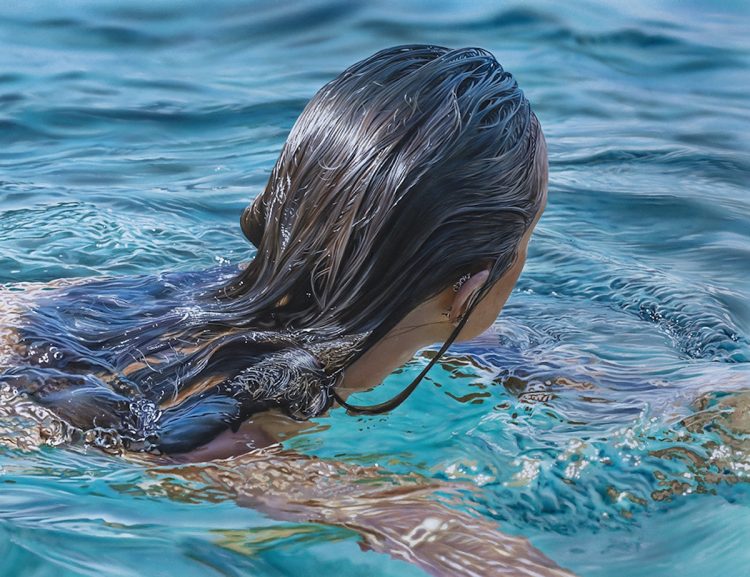Johannes Wessmark is a self-taught Swedish artist who specializes in hyperrealistic acrylic painting that rivals high-resolution photography.
Johannes Wessmark was born in Karlstad, Sweden in 1962. He had a happy childhood, but he wasn’t the most popular of his peers, preferring instead to observe without interacting. Looking back, the Swedish painter remembers some quirks that hint at the attention to detail his art is now world-famous for. When he was 10, he decided to start cleaning his own room, just to make sure it was done exactly the way he wanted. He sorted all of his toys in straight lines and in color order, which was a bit odd for a kid his age. He also drew and painted a lot, and his mother encouraged him to develop his artistic side, which turned out to be a great idea, as Johannes is one of the world’s most respected hyperrealistic artists.

“In my paintings, I want to convey a feeling of calm and relaxation. Water and landscapes a subject matters that have followed me for many years,” Wessmark wrote on his website. “I grew up in the country and have spent much time in the wilderness and forests around me. We also had a summer-house by the Swedish west coast where we spent many holidays. Positive experiences that came to influence me as an artist many years later. Hyperrealistic figurative and portrait painting together with landscapes have become my favorite motives over the many years as an artist.”
View this post on Instagram
Although he has tackled many varied subjects in his ultra-realistic acrylic paintings over the years, Johannes Wessmark has become particularly famous for his ability to depict the female body in water. Moving water is one of the most challenging things to pull off as a hyperrealistic painter, because the distortion of the objects or people submerged in it, and the reflection of light are incredibly tricky. And yet, Johannes has this uncanny ability to make it look as real as a photograph.
View this post on Instagram
“It has been one of my favorite subject matters for many years,” the Swedish artist told My Modern Met. “When I started painting women it came quite naturally to put them in water. I love both the beauty of the female form and the challenge of painting moving and reflecting water. This has become more or less my signum even if I have painted many other subject matters through my 30 years as a professional artist.”
View this post on Instagram
View this post on Instagram
View this post on Instagram
View this post on Instagram
View this post on Instagram






